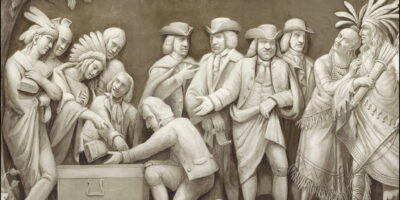Keynes Didn’t Invent Aggregate Analysis
For some not acquainted with the breadth of economic discourse that occurred in the early 20th century, economic thought in the 1930s is defined primarily by the Hayek-Keynes debate. Perhaps because of the fame of the debate between Keynes and Hayek, many believe aggregate analysis is a Keynesian invention.
In critiquing Keynes’s work before the writing of the General Theory, Hayek noted that “Mr. Keynes’ aggregates conceal the most fundamental mechanisms of change” (1931, 277). Keynesian economics certainly uses aggregates. But so did many of the macroeconomists that preceded Keynes. Keynes’s work was not the only one that received this critique from Hayek. Around the same time, Hayek had written Prices and Production. In it he argued against analysis dependent upon macroeconomic aggregates that had been popularized, for example, by Irving Fisher.
A tradition of macroeconomic analysis preexisted Keynes. By conflating the macroeconomics of Keynes with macroeconomics, we run the danger of discarding the contributions that Keynes himself inherited. I am not the first to recognize this problem. David Laidler notes that “Pigou and Knight in particular, were scornful of his claims to novelty” (21). By disregarding the macroeconomics that preexisted Keynes, we risk discarding opponents of Keynes who make valuable allies in the battle of ideas. Further, by understanding the value of aggregate analysis, we can identify the areas in which Keynesian analysis made a leap of faith.
When we refer to aggregate analysis, we mean in particular the equation of exchange. This states that the nominal value of production in the economy is always identical to the value of total expenditures. This proposition was first put forward by David Hume, and the spirit of the analytical device was even identified by Nicolaus Copernicus. The conclusion drawn by these authors represents an early form of the quantity theory that says simply that an increase in the quantity of money will put upward pressure on the average level of prices. So far, so good. Even Hayek would not have disputed this claim; consider that he battled against the Keynesian proposition that the link between an increase in the quantity of money and an increase in the price level was broken.
Keynes’s fundamental problem was not that his analysis depended on aggregates, but that he misused those aggregates. To understand this issue, we must look at Keynes’s assumptions concerning demand to hold money. Keynes proposed that it was not uncommon for individuals to hoard money. He also argued that the rate of interest is often too high to encourage full employment. Keynes believed that the velocity of money may suffer chronic collapse, meaning that demand to hold money for safekeeping may increase substantially. He even believed that during depression there was no strict upper limit to this increase in demand. Unwillingness to spend money would drive down prices, leading to a deflationary spiral. Keynes believed that this problem could not be resolved by increasing the quantity of money. His solution was not simply to print money. Instead, Keynes advised that the government could boost a sputtering economy by increasing expenditures financed by money creation. Keynes believed in a free lunch.
Keynes actually borrowed an argument from proto-monetarists and added a nuance of his own. Monetary economists, such as Ralph Hawtrey, noted that fluctuations in total outlays could drive fluctuations in macroeconomic performance. Total outlays has the same meaning as aggregate demand. While Hawtrey recognized that fluctuations in aggregate demand may occur because of either a shrinking of the quantity of money or an increase in demand to hold money, he, and most senior macroeconomists at the time that Keynes wrote the General Theory, disagreed with Keynes about which mattered more. Hawtrey and Keynes even had a public dispute over this issue at the Macmillan Commission. Keynes interrogated Hawtrey concerning Hawtrey’s belief that the high levels of unemployment during the late 1920s were due to “the tragedy of a series of avoidable errors in monetary policy,” in particular that “the Bank of England could have followed an easy money policy … that would have cured unemployment.” Keynes was skeptical of the view that monetary policy on its own could be used to stabilize aggregate demand.
It is necessary that we maintain a distinction between monetary policy aimed at mitigating economic depression and a Keynesian policy of expansionary fiscal policy enabled by money creation. In the former case, the central bank seeks to alleviate the impact of monetary disturbances on economic activity. In the latter case, economic activity funded by the government is privileged over private economic activity. Keynes’ justification for this policy was that resources would otherwise remain underutilized. Old monetarists argued, on the contrary, that alleviation of disturbances in the money market was sufficient for offsetting economic depression. Many, including even Hayek not long after his debate with Keynes in his proposal of a commodity reserve standard, recognized a need for policy to promote monetary stability.
And both sides continue to argue today, with proponents of fiscal expansion like Paul Krugman on one side, and proponents of monetary stabilization like Scott Sumner and David Glasner on the other. They represent a continuation of debate between Keynes and the old monetarists that is too often forgotten.











